The peony flower, with its full, rounded bloom and vibrant range of colours, is not only a stunning addition to any garden but also a powerful symbol imbued with significant cultural meaning. Embraced across the globe for its representation of success, prosperity, and good luck, the peony is a botanical treasure rich in history and lore.
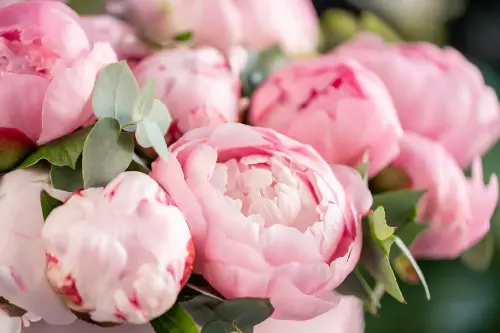
The Peony in Cultural Mythology and History
Across the world, the peony has surfaced in myriad cultural myths and historic references, speaking volumes of its significance to human societies. In ancient Greek mythology, the peony is associated with Paeon, a student of the god of medicine and healing, Asclepius. Jealous of his pupil’s budding talent, Asclepius sought to harm Paeon, but Zeus, taking pity on the young scholar, saved him by transforming him into the peony flower.
Moving eastward to China, where peonies are indigenous, the flower is elevated to near celestial status and is often referred to as the "king of the flowers." The Chinese name for peony, ‘Sho Yu,' means ‘most beautiful’ and illustrates the high esteem in which it is held. It has been a cultural fixture for centuries, celebrated in art and poetry for its association with royalty, fortune, and honour.
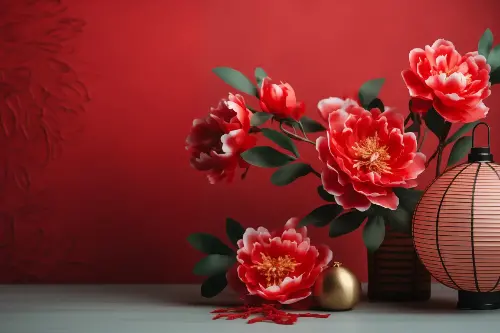
Symbolism and Significance in Asian Traditions
In many Asian cultures, particularly in China and Japan, the peony symbolises wealth, good luck, and prosperity. It is commonly featured in the festive decorations for the Chinese New Year and is an emblem of love, affection, and feminine beauty. The importance of the peony in Eastern culture can hardly be overstated; it has been cultivated and hybridised in China for over a thousand years.
During the Sui and Tang dynasties, the peony even became the nation's most esteemed flower, and its likeness was used to adorn the lavish garments and items belonging to the imperial family. In Japan, the peony symbolises good fortune, bravery, and honour, and is often used in tattoos to signify wealth, a happy marriage, or to simply invite good luck.
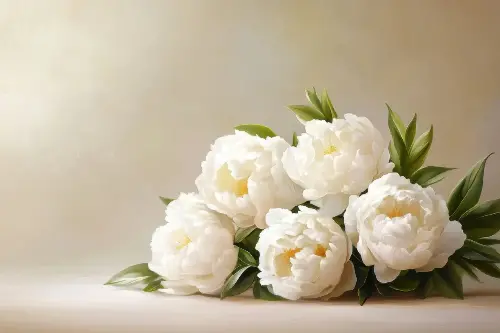
The Language of Flowers: Victorian Interpretations
Following the tradition of the Victorian language of flowers, or floriography, peonies carry with them a wealth of meaning. Known as a flower of prosperity, the peony is believed to bring good luck and a happy marriage. Additionally, it represents bashfulness due to the myth of nymphs hiding within its petals.
Victorian bouquets often included peonies to communicate a sense of wealth and honour, and they would also be presented as gifts to wish good luck and health to the recipient. Thus, including peonies in bridal bouquets or in wedding decorations was—and remains—a common practice, symbolising the hope for a prosperous life together for the newlyweds.
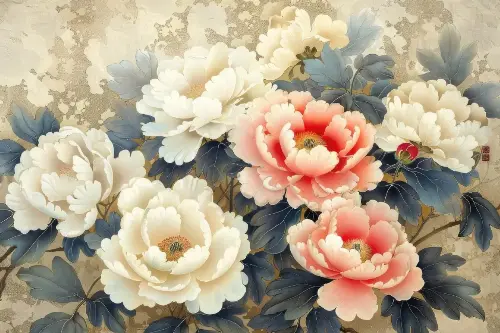
Peonies in Art and Literature
The peony has long served as an inspiration for artists and poets who are captured by the flower's lush beauty and rich symbolism. From Renaissance still-life paintings to modern floral abstracts, the peony is a favoured muse. It is a flower that has been painted, photographed, and etched into our creative consciousness.
In literature, the peony's presence is often associated with opulence and splendour. It has been the subject of prose and poetry alike, with writers waxing lyrical about its delicate scent and its portentous symbolism. One cannot think of the peony without recalling the words of legends such as Oscar Wilde, who mentioned the flower in his works to symbolise the beauty and brevity of life.
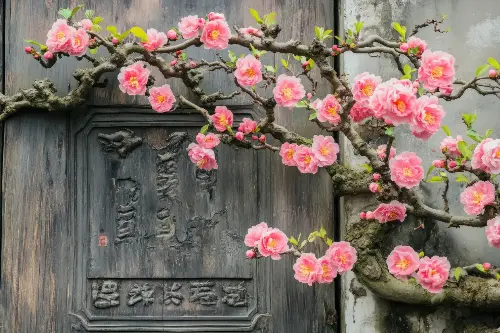
Botanical Beauty and Horticultural Appeal
Beyond the metaphors and myths, the peony is also horticulturally significant. Gardeners are drawn to its low maintenance and high impact appeal. Whether they are herbaceous or tree peonies, these flowers have the ability to turn heads when they blossom in late spring to early summer. Their showy, often fragrant blooms come in shades of white, yellow, pink, and red, and sometimes feature a combination of colours.
Botanical enthusiasts relish the antiquity of the peony, with some species able to live for over a century when undisturbed in a conducive environment. This longevity, coupled with its spectacular display of blooms, secures the peony’s spot as a heritage plant in gardens worldwide.
In today's fast-paced and ever-changing society, peonies continue to hold a special place in the hearts of many. They are a popular choice for contemporary floral arrangements, wedding bouquets, and are even celebrated at festivals dedicated entirely to their bloom. In a modern context, the peony encapsulates both the grace of the past and the hopeful aspirations for the future.
As symbols of success and good luck, peonies reinforce the connection between nature's beauty and human life's most precious ideals. They encourage us to embrace fortune, delight in the splendour of the natural world, and remember the cultural ties that bind us across time and borders. Whether you are charmed by their storied past or simply taken by their present beauty, peonies are indeed nature's testament to prosperity and luck in the embrace of its colourful petals.
